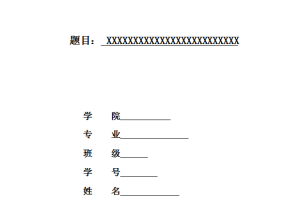【摘要】获取资金的渠道和方式的不同组合导致各企业资本结构的差异,合理的资本结构能帮助企业控制风险,最大程度地向信息使用者传达有利于企业的信息,增强投资者对企业经营状况的信心,并促使其作出与企业共赢的投资决策,提高企业的业绩。由各专家学者的研究结果可以了解到企业的资本结构受行业因素的影响很大,因此,清楚认识本行业资本结构的影响因素对企业的发展大有裨益。本文针对房地产行业的资本结构的影响因素进行研究,选取在上海证券交易所上市的A股企业作为研究对象,运用描述性统计、因子分析和回归分析的方法,对2010年到2014年公司年度财务报表的相关数据进行统计,研究了偿还债务能力、获取利润能力、成长发展能力、企业经营能力、企业规模大小这五个常见的影响因素与资本结构的关系,并在研究结论的基础上对相关房地产企业提出对于优化资本结构的看法。
【关键词】房地产行业;资本结构;影响因素;实证分析
Empirical Research on the Factors Influencing the Capital Structure of the Publicly Traded Real Estate Companies in China
Abstract:Different combinations of financing sources and methods lead to differences in capital structure of enterprises. Reasonable capital structure is conducive to enterprise risk control. It also helps to deliver healthy information about enterprise value to outside investors, strengthen investor confidence on business conditions and prompted them to make a win-win investment decisions to improve enterprise performance. According to the experts’ findings, we can understand that capital structure greatly influenced by industry factors. Therefore, a clear understanding of the impact factor of the industry’s capital structure is great benefit to the development of enterprises. This paper studies the factors that affect the capital structure of real estate industry, selecting the A shares on the Shanghai Stock Exchange as a sample. Using descriptive statistics, factor analysis and regression analysis to statistical the financial data of yearbook in the last five years. Explore the relationship between capital structure and five common influencing factors, including solvency, profitability, growth capacity, management capacity, company size. The real estate business made recommendations for the optimization of the capital structure, based on the conclusions of the study.
Key words: estate companies empirical study capital structure influential factor
目录
摘 要……………………………………………………………………………………………i
Abstract…………………………………………………………………………………………ii
一、引言…………………………………………………………………………………………1
二、国内外文献回顾……………………………………………………………………………1
(一)国外相关研究……………………………………………………………………………1
(二)国内相关研究……………………………………………………………………………2
三、实证研究设计………………………………………………………………………………3
(一)样本选取…………………………………………………………………………………3
(二)变量选择…………………………………………………………………………………3
四、实证分析……………………………………………………………………………………4
(一)描述性统计………………………………………………………………………………4
(二)因子分析…………………………………………………………………………………5
(三)回归分析…………………………………………………………………………………8
五、研究结论……………………………………………………………………………………9
(一)研究结论…………………………………………………………………………………9
(二)建议……………………………………………………………………………………11
参考文献………………………………………………………………………………………12
致谢……………………………………………………………………………………………15





